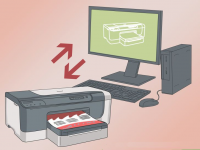Table of Contents
Printing from laptops
FIRST: when you are printing from the wireless network, make sure you have authenticated to the system as described on the page about the wireless networks. Note that only our specific networks know about the printers in our buildings; Eduroam and the generic Leiden University networks cannot access our printers.
Adding printer in MacOS X
- Go to System Preferences
- Go to Printers & Scanners
- Push the + button to add a new printer
- From the drop down menu that appears, choose 'Add Other Printer or Scanner' (or 'Add Printer or Scanner', the name of the item varies between Mac OS X versions)
- Click on the Sphere with 'IP'
- Fill in the fields in as follows:
- Address for STRW users: printserver.strw.leidenuniv.nl or laptopprint.strw.leidenuniv.nl
- Address for LORENTZ users: printers.lorentz.leidenuniv.nl
- Protocol: Internet Printing Protocol - IPP
- Queue: printers/hpcolor (or other printer names, but make sure to type
printers/before the usual name of the printer!) - Name: (fill in some name that helps you remember which printer this is)
- Location: (optional, if for your information only, eg to distinguish strw printers from the printer at home)
- Print Using: Choosing 'Select Printer Software' causes a driver list to pop up. See the list of available printers and printer types
- Set appropriate options, eg duplexing for double sided printers. Make sure to set A4 as the standard paper format in stead of US letter!!!
- Click OK
- Back in the Print & Scan dialog window, do NOT check the 'Share this printer on the network' box. This will cause the printer you just attached to your laptop or desktop Mac to be re-shared over the network, causing all kinds of confusion. For instance, someone could attach to this re-shared printer, and be surprised when he suddenly cannot print whenever your laptop goes to sleep…
Using the cups daemon in your OS X installation:
Alternatively, you can use the local cups configuration environment on your Mac, if enabled (see help or various information pages online on how to enable this service). On the url field in your web browser type: http://127.0.0.1:631. Now you see the management interface to cups. Here you can add, remove and modify printers as you like. The interface is quite intuitive.
When you are prompted for a user name and password to confirm the changes, this refers to the account on your Mac (with administrator privileges).
You might want to set double-sided printing on by default, to save paper. Click on the Administration menu and choose “Set Default Options”. From there clicking on “General”, you can choose to turn on “Two-Sided”. By clicking “Set Default options” the setting is saved for all future sessions.
Adding a printer in Linux
Since various Linux distributions use their own tool for the configuration of printers, we cannot give an exact description of the options to select, just the general information. It is usually quite intuitive to find out where exactly this information needs to be entered in the available configuration tool.
The printserver supports the Internet printing protocol (IPP; also known as CUPS). To add a printer, make sure you select IPP as the protocol, and printserver.strw.leidenuniv.nl. The queue on the server is under the printers virtual directory, so e.g. to print to the hpcolor printer, you will have to specify 'printers/hpcolor' as the printer queue.
Next you can select the manufacturer and printer model, or use a generic postscript printer driver. See the list of available printers for details.
Also make sure to use A4 paper in stead of American letter format.
Note that it is currently not possible to automatically search for printers; you will have to specify the name of the server and the queue manually.
If your laptop is running its own local CUPS daemon, you can follow the instructions for CUPS given under Mac OS above.
Wireless printing Windows
Windows should be able to use this method as well (but: see below).
In the Add printer wizard, select the option “Connect to a printer on the internet”. Windows will first try to find the printer, which is unfortunately not possible in our setup. When offered to enter the printer's address manually, click “next” and in the URL window fill in (for sterrewacht):
http://printserver.strw.leidenuniv.nl:631/printers/hpcolor
and for Lorentz Institute:
http://printers.lorentz.leidenuniv.nl:631/printers/lorentz_big
Of course this works for any of our printer names, so fill in your printer of choice here. A list of available printers is available, along with their make and model, for selecting the right driver. Also make sure to use A4 paper in stead of American letter format.
However, sometimes Windows is installed with the Internet Printing component disabled. So if you weren't presented with the option to connect to a printer on the internet, go to the control panel, select Turn Windows Features On or Off and scroll down to Print and Document Services. Open that section, and make sure that the Internet Printing Client checkbox is checked.



